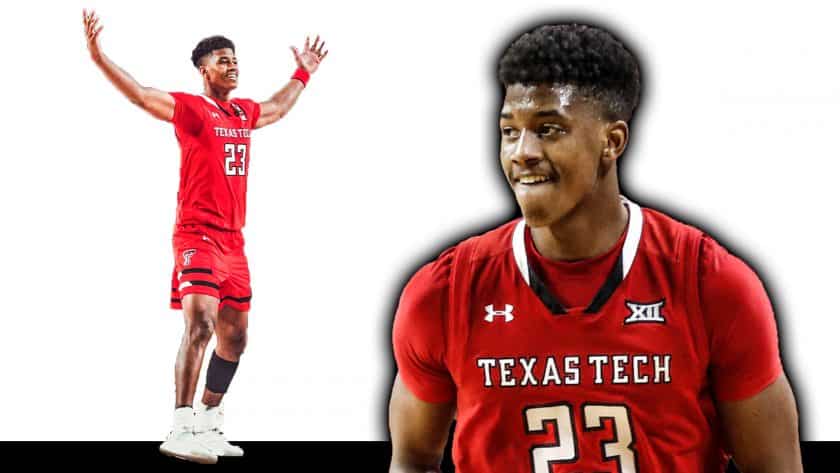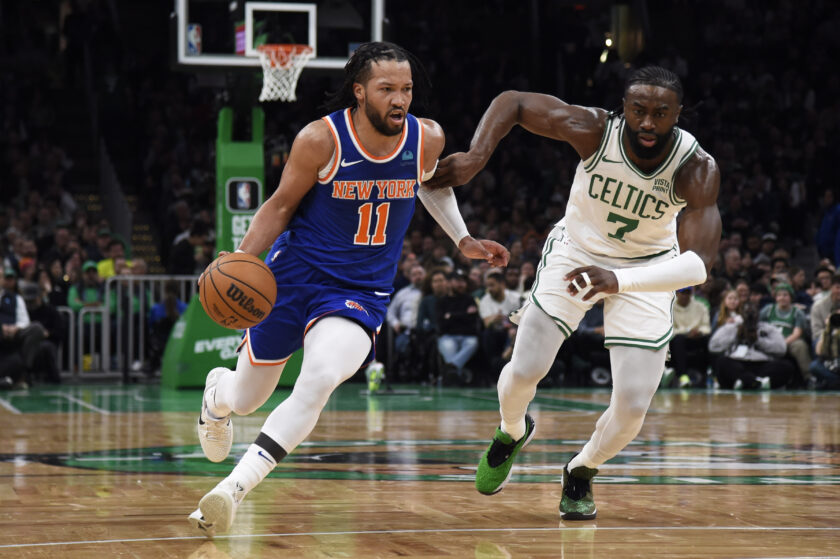New York Knicks draft profile: Texas Tech G Jarrett Culver

Few prospects made a leap as big as Jarrett Culver did during his sophomore year. The New York Knicks should not sleep on this versatile guard.
[sc name=”Geoffrey Campbell Banner”]Persistence personified. Jarrett Culver’s journey towards the top of the 2019 draft class has been characterized by adjustment and hard work. The New York Knicks have will have options when drafting at the number three spot. There may be more exciting athletes with higher potential available, but few will be as solid and as versatile as Culver.
The Texas Tech guard stands at 6-foot-6, 194 pounds, with a 6-foot-9 wingspan per the NBA draft combine. The 20-year-old sophomore, with West Texas roots, reportedly grew an inch or so after his freshman year. His development on the court caught the eyes of many scouts, making him one of the most intriguing prospects in the lottery.
Culver has credited his religious upbringing and close-knit family for keeping him grounded and in the gym. Not the only athlete in the family, Culver’s brother, Trey, was a two-time NCAA indoor champion in the high jump in 2016 and 2017. Coming out of high school, Culver was a three-star recruit, but he caught the eye of current Texas Tech head coach Chris Beard.
Culver’s appeal may start with his size, but his defense and awareness are two of his biggest strengths. Playing on one of the best defensive programs in the nation, Culver stood out as an above-average perimeter defender, both on and off the ball. Additionally, Culver’s skillset on the offensive side of the ball has drawn comparisons to current NBA players from Jimmy Butler to Evan Turner.
Beard had a front row seat for Culver’s ascension towards All-American status. He spoke with Chris Dortch of NBA.com about recruiting Culver and his tireless work ethic. Both Beard and Michigan State coach Tom Izzo hold the West Texas product in high regard.
“When talent intersects love of the game, special things happen,” Beard said about Culver’s work ethic. “And when you also have that intersection in the neighborhood of character and discipline … Jarrett worked on his craft. He came in here as a guy who could score. Two years later, he leaves as one of the best defensive players in college basketball. A guy who could beat you with the pass. He’s a great pick-and-roll player, can score in the post with his back to the basket. He’s improved as a 3-point shooter, a free-throw shooter. He’s worked at his craft.”
Coach Izzo was also quick to praise Culver’s versatility as a two-way player.
“I’ve been really impressed with him,” Izzo said during the tournament. “I love guys … I had a kid named Gary Harris a couple of years ago who I thought was one of the best two-way players I’ve ever had. He could do it on the offensive end. He could do it on the defensive end. He could impact the game in both. I think Culver does that. I think he’s got versatility, and he’s a scorer that plays defense. Sometimes those are harder to come by, and I think that’s what makes him so special.”
Culver’s resume and references are certainly impressive, but in order to fully evaluate his talent, you have to take a deep dive into his statistics, both traditional and advanced. Furthermore, you don’t get paid for what you can do, but what you’re projected to do at the next level. With that said, let’s take a look at Culver’s production during his college career.
[sc name=”Knicks Title” text=”Defense” ]Right off the top, Culver impressed during his sophomore year, placing sixth in the nation in defensive rating (86.7) according to Sports Reference. Culver finished above Zion Williamson and Washington guard Matisse Thybulle. He finished just below teammate and elite rim protector Tariq Owens. However, as advanced stats go, one must be careful when using defensive rating as its often heavily influenced by who is on the court with you.
The question should be asked, how much of Culver’s defensive metrics can be attributed to playing with Owens?
Jonathan Tjarks of The Ringer writes about Culver’s individual defense and skills that stand out on the court. Culver is not an elite athlete, yet he has exceptional positional awareness, good footwork, and he exhibits a consistent effort to put pressure on opposing ball handlers. Culver had one of the highest combinations of steal rates (2.7%) and block rates (2.1%) of any wing player in the draft.

Of the few defensive highlights in this video, Culver’s timing on blocks and ability to keep his man in front of him are on full display. Furthermore, Tyler Metcalf’s piece from Hashtag Basketball shows that Culver finished within the 93rd percentile in points per possession allowed (.669). Off the ball, Culver anticipates his opponent’s next move and regularly uses his high basketball I.Q. and footwork to create steals and/or cut off drives to the basket.
[sc name=”Knicks Title” text=”Offense” ]On the offensive side of the ball, Culver made significant improvements from his freshman year. He’s patient on offense as a creator. One of Culver’s biggest strengths is that he moves at his own pace and doesn’t let defenders speed him up. However, the one major question at the next level will be his consistency as a three-point threat.
From his freshman to sophomore year, Culver improved in almost every major statistical category including field goal percentage, free throw percentage, total rebounds per game, assists per game and points per game. The Big 12 All-American finished the year averaging 18.5 points per game with a field goal percentage just over 46%.
Culver’s three-point percentage dipped from 38% to 30%, however, most scouts believe that this was due to Culver changing his shot mechanics and taking a higher volume of threes during his sophomore year. Culver’s current shooting form is more compact, yet he tends to start with the ball at his waist, causing a longer load up towards release.
[sc name=”Knicks Center” ]
Watching tape on Culver, my favorite aspect of his game is confidence and basketball I.Q. As a ball handler, despite not having Kyrie-style dribble, Culver has a clear idea of what he wants to do. He only uses screens if there’s a clear route for him to score or set up a teammate for an easy basket. If it’s not there he won’t rush it. Since Culver is not a top-tier athlete, he relies more on his reads of the game and his ability to cut and move without the ball.
Sites like NBAdraft.net and The Stepien credit Culver’s lower body strength as a tool he uses when driving the lane. Culver can absorb contact and finish at the rim with efficiency. Culver shot 69% at the rim on 205 attempts this past season per The Stepien. Additionally, per Metcalf’s piece, Culver finished at the 77th percentile in isolation plays, scoring .95 points per possession per Hashtag Basketball.
In conclusion, I firmly believe that Culver has a long NBA career ahead of him. Whether he becomes a perennial All-Star or a solid three and D guy with shades of a secondary playmaker is another story. Gun to my head, I would probably choose the latter. Because Culver isn’t a phenomenal athlete he will have to figure out ways to create separation in the pros in order to get his shot off.
Moreover, Culver’s low three-point percentage will scare some executives off. He clearly needs to become more comfortable and efficient with his form and release. However, Kevin Knox is also a shooter with a long release, and he certainly made some strides during his rookie year, especially in catch-and-shoot situations, which gives me more hope for Culver.
Culver will absolutely make an impact on any team that drafts him. He’s an above average individual and help defender. His passing and basketball I.Q. will make him an instant fit in any offense. Actually, you could probably make the case that if the Knicks sign both Kevin Durant and Kyrie Irving, a player like Culver would be a better fit than R.J. Barrett.
Overall, Culver is probably a reach at number three, yet he has the potential to make teams regret passing on him.
[sc name=”Twitter Follow Link” username=”@geoff_boy_ardee” ] [sc name=”Knicks Link Next” link=”https://elitesportsny.com/2019/05/17/one-lesson-each-remaining-playoff-team-has-taught-new-york-knicks/” text=”One Lesson Each Playoff Team Has Taught The Knicks ” ]




